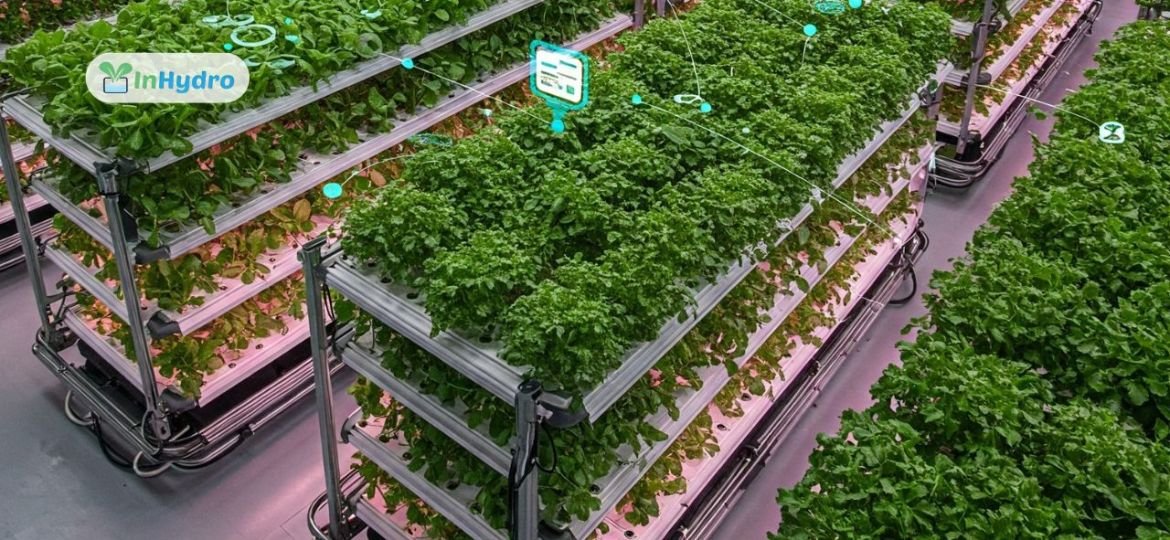
IoT in Hydroponics: How Smart Sensors are Reducing Water & Nutrient Waste
In the age of smart agriculture, hydroponics is emerging as a game-changer in sustainable food production. By eliminating soil and growing plants in nutrient-rich water, hydroponic systems offer a controlled environment that maximizes yield and minimizes waste. But what if these systems could be made even more efficient? This is where the Internet of Things (IoT) steps in. With smart sensors and automated controls, IoT is revolutionizing hydroponic farming by optimizing water and nutrient use, reducing waste, and improving productivity.
The Role of IoT in Hydroponics
IoT refers to a network of interconnected devices that communicate and exchange data in real time. In hydroponics, IoT-enabled sensors monitor key parameters such as temperature, humidity, pH levels, nutrient concentration, and water usage. The data collected helps farmers make precise adjustments, ensuring optimal plant growth while minimizing resource wastage.
How Smart Sensors Improve Efficiency
Smart sensors in hydroponics track and regulate critical growth factors. Let’s explore their role in reducing water and nutrient waste:
1. Real-Time Monitoring of Water Usage
Traditional soil-based farming is notorious for water wastage due to inefficient irrigation. In contrast, hydroponics already reduces water use by up to 90%, and IoT sensors further optimize this by:
- Detecting leaks and excessive water flow to prevent wastage.
- Tracking evaporation and plant uptake to adjust the watering schedule dynamically.
- Recycling water efficiently based on real-time moisture levels and plant needs.
2. Precision Nutrient Management
Nutrients in hydroponics must be carefully balanced to support healthy plant growth. IoT-enabled nutrient sensors help by:
- Measuring nutrient concentration (EC – Electrical Conductivity) to avoid overuse or deficiency.
- Automatically adjusting nutrient delivery based on plant growth stage and requirements.
- Reducing runoff and pollution by preventing over-fertilization.
3. Automated pH & Temperature Regulation
Maintaining the correct pH balance and temperature is crucial for nutrient absorption. IoT sensors automate these adjustments by:
- Detecting pH fluctuations and adjusting it through precise acid/base dosing.
- Monitoring temperature variations to regulate climate control systems such as fans and coolers.
- Preventing nutrient lockout, where plants cannot absorb essential minerals due to pH imbalance.
The Benefits of IoT in Hydroponic Farming
By integrating IoT-based automation, hydroponic farms can significantly enhance efficiency and sustainability. The key benefits include:
1. Significant Water Savings
Water scarcity is a growing global concern, and hydroponic farms powered by IoT can cut water use even further by preventing leaks, optimizing irrigation cycles, and recycling nutrient solutions efficiently.
2. Higher Yields with Lower Costs
With precise control over growing conditions, plants grow faster and healthier, leading to higher productivity and lower operational costs. IoT helps reduce input waste, making hydroponic farming more profitable in the long run.
3. Reduced Human Intervention
Smart hydroponic systems require less manual labor, as IoT handles monitoring and adjustments automatically. This allows farmers to focus on scaling their business rather than managing daily nutrient and water levels.
4. Sustainable & Eco-Friendly Farming
By reducing excess fertilizer use, IoT-based hydroponics prevents water contamination and reduces the environmental footprint of agriculture. This makes it an ideal solution for urban farming and climate-resilient food production.
Challenges & Considerations
Despite its many advantages, adopting IoT in hydroponics comes with challenges such as:
- High Initial Investment – Setting up IoT-enabled hydroponic farms requires capital for sensors, automation systems, and data management tools.
- Technical Expertise – Farmers need training in using IoT dashboards and automation controls.
- Internet Connectivity Issues – In remote areas, stable internet access is crucial for IoT efficiency.
Future of IoT in Hydroponic Farming
As technology advances, IoT in hydroponics is expected to become more accessible and affordable. Innovations such as AI-powered predictive analytics, blockchain traceability, and cloud-based farming solutions will further revolutionize the industry. Governments and agritech startups are also investing in smart hydroponic farms to ensure food security and sustainable agriculture.
Conclusion
IoT-powered hydroponics represents the future of smart agriculture, offering precise control, resource efficiency, and higher yields. By integrating smart sensors for water and nutrient management, farmers can reduce waste, cut costs, and grow healthier crops with minimal environmental impact. As IoT technology becomes more mainstream, hydroponic farming will continue to play a pivotal role in sustainable food production worldwide.
At InHydro, we specialize in customized hydroponic solutions integrated with IoT automation. Whether you’re a commercial grower or an agritech entrepreneur, our smart farming technologies can help you achieve maximum efficiency and profitability. Contact us today to explore the future of IoT-powered hydroponics!

